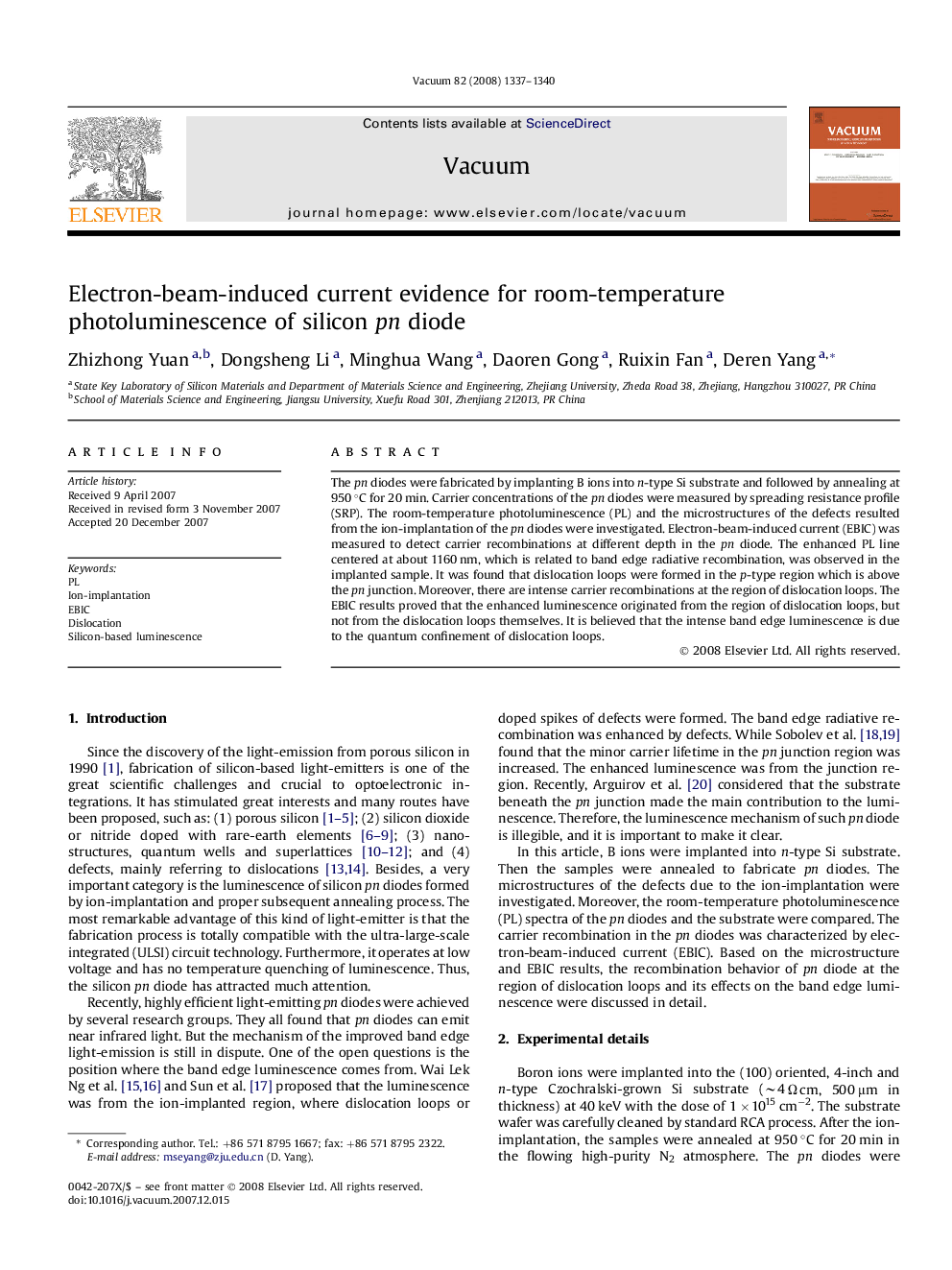| Article ID | Journal | Published Year | Pages | File Type |
|---|---|---|---|---|
| 1691217 | Vacuum | 2008 | 4 Pages |
Abstract
The pn diodes were fabricated by implanting B ions into n-type Si substrate and followed by annealing at 950 °C for 20 min. Carrier concentrations of the pn diodes were measured by spreading resistance profile (SRP). The room-temperature photoluminescence (PL) and the microstructures of the defects resulted from the ion-implantation of the pn diodes were investigated. Electron-beam-induced current (EBIC) was measured to detect carrier recombinations at different depth in the pn diode. The enhanced PL line centered at about 1160 nm, which is related to band edge radiative recombination, was observed in the implanted sample. It was found that dislocation loops were formed in the p-type region which is above the pn junction. Moreover, there are intense carrier recombinations at the region of dislocation loops. The EBIC results proved that the enhanced luminescence originated from the region of dislocation loops, but not from the dislocation loops themselves. It is believed that the intense band edge luminescence is due to the quantum confinement of dislocation loops.
Keywords
Related Topics
Physical Sciences and Engineering
Materials Science
Surfaces, Coatings and Films
Authors
Zhizhong Yuan, Dongsheng Li, Minghua Wang, Daoren Gong, Ruixin Fan, Deren Yang,
